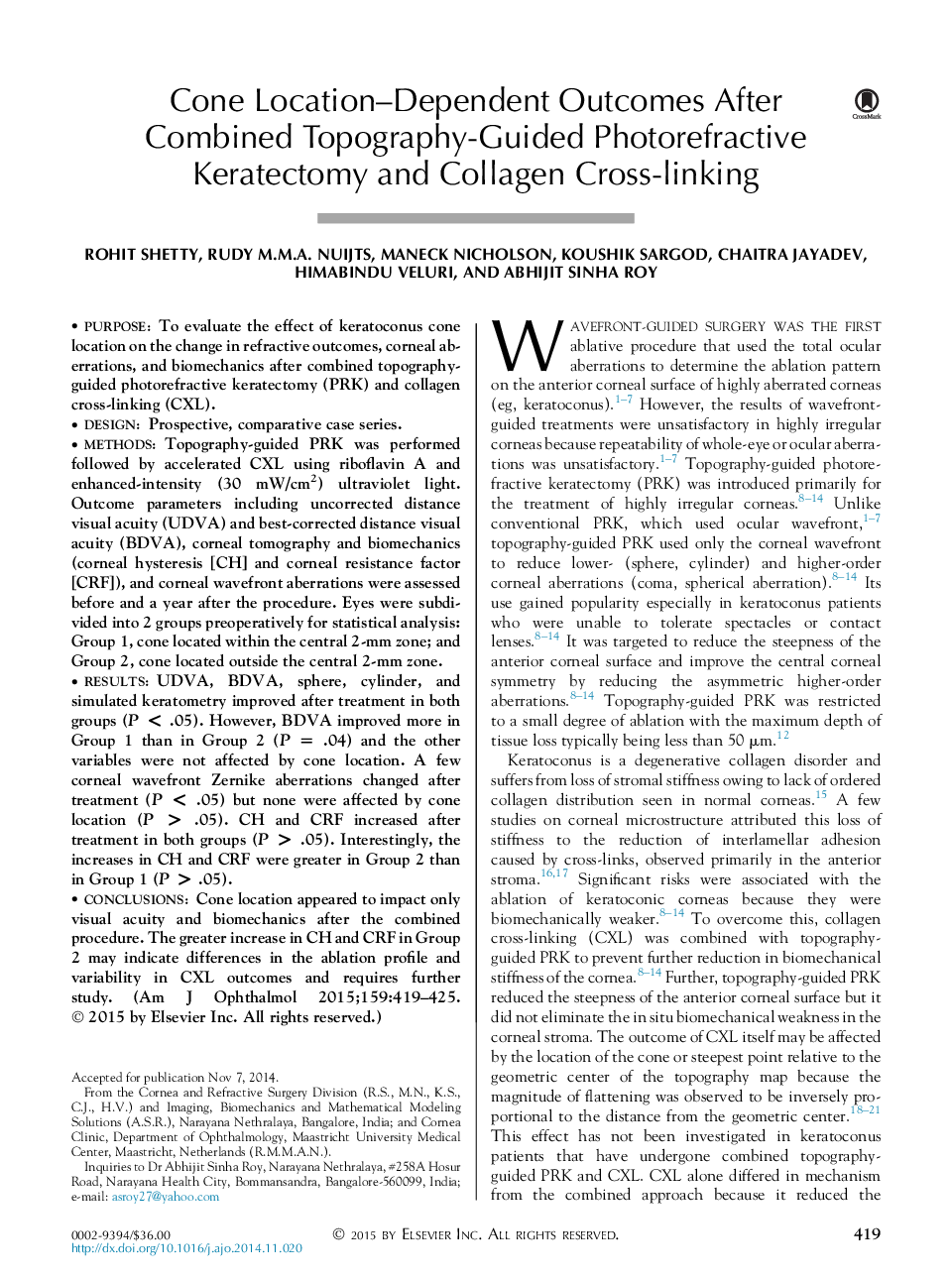| کد مقاله | کد نشریه | سال انتشار | مقاله انگلیسی | نسخه تمام متن |
|---|---|---|---|---|
| 6195189 | 1602126 | 2015 | 9 صفحه PDF | دانلود رایگان |
PurposeTo evaluate the effect of keratoconus cone location on the change in refractive outcomes, corneal aberrations, and biomechanics after combined topography-guided photorefractive keratectomy (PRK) and collagen cross-linking (CXL).DesignProspective, comparative case series.MethodsTopography-guided PRK was performed followed by accelerated CXL using riboflavin A and enhanced-intensity (30 mW/cm2) ultraviolet light. Outcome parameters including uncorrected distance visual acuity (UDVA) and best-corrected distance visual acuity (BDVA), corneal tomography and biomechanics (corneal hysteresis [CH] and corneal resistance factor [CRF]), and corneal wavefront aberrations were assessed before and a year after the procedure. Eyes were subdivided into 2 groups preoperatively for statistical analysis: Group 1, cone located within the central 2-mm zone; and Group 2, cone located outside the central 2-mm zone.ResultsUDVA, BDVA, sphere, cylinder, and simulated keratometry improved after treatment in both groups (P < .05). However, BDVA improved more in Group 1 than in Group 2 (PÂ = .04) and the other variables were not affected by cone location. A few corneal wavefront Zernike aberrations changed after treatment (P < .05) but none were affected by cone location (P > .05). CH and CRF increased after treatment in both groups (P > .05). Interestingly, the increases in CH and CRF were greater in Group 2 than in Group 1 (P > .05).ConclusionsCone location appeared to impact only visual acuity and biomechanics after the combined procedure. The greater increase in CH and CRF in Group 2 may indicate differences in the ablation profile and variability in CXL outcomes and requires further study.
Journal: American Journal of Ophthalmology - Volume 159, Issue 3, March 2015, Pages 419-425.e2
